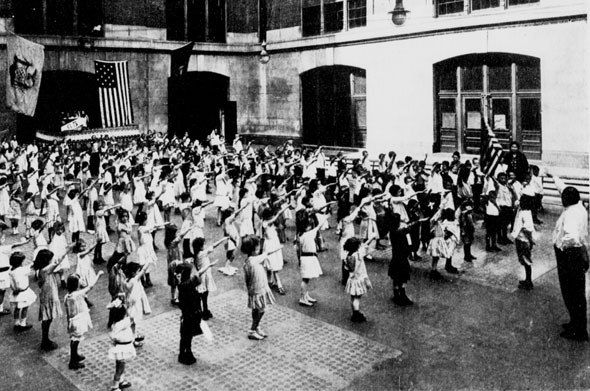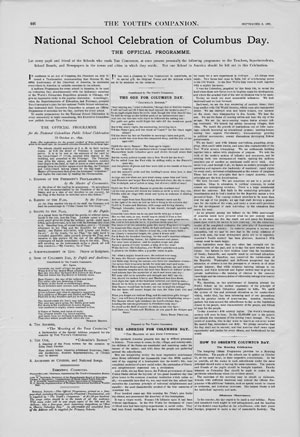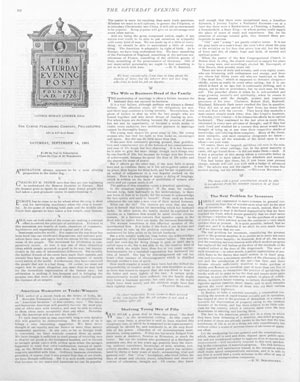The Radical Author Behind the Pledge of Allegiance

The Pledge of Allegiance has become so familiar to Americans that it’s hard for us to believe it wasn’t written long ago by some Founding Father.
In fact, it’s about 100 years younger than the Constitution. The pledge was first published in a children’s magazine in 1892; has been revised several times since; and its author, Francis Bellamy, was considered a dangerous radical.
The Changing Pledge

It was first recited in public schoolhouses throughout the U.S. on October 12, 1892, as part of Columbus Day celebrations. But the version that children memorized 123 years ago was noticeably different from today’s.
Here’s the original version: “I pledge allegiance to my Flag and the Republic for which it stands, one nation, indivisible, with liberty and justice for all.”
In 1923, something called the National Flag Conference wanted to make sure that immigrants who said the pledge weren’t secretly swearing allegiance to the flag of their original country. They changed the words “my flag” to “the flag of the United States”— the “of America” was tacked on a year later. (This was the version Congress officially recognized in 1942.)
Then, in 1954, a Congressional Act inserted the words “under God” after “one Nation.” The legislators felt the addition would help the country in its ideological war with atheistic communism.
The Radical Author
What would Francis Bellamy think of these changes? He had originally written the pledge at the urging of the editor of The Youth’s Companion with the goal of instilling nationalism in children. He also hoped that, when recited by adult immigrants, the pledge would be a miniature civic lesson that would protect them from foreign ideas of disloyalty or revolution.
We might assume that, as an ordained minister, Bellamy would have approved of introducing God to his pledge. But Bellamy was also a socialist who believed that Christians should support workers’ rights and oppose powerful monopolies. Yet he kept both Christianity and socialism out of his pledge.
Bellamy became so outspoken in his support for Christian socialism that his congregation dismissed him from his post as minister.
Yet the Post found nothing too dangerous in the short items he wrote for their editorial page.

One of these items must surely have challenged Post readers of 1901. “The Wife as Business-Head of the Family,” which appeared in the September 14 issue, challenged the wisdom of husbands always being the chief breadwinner of the family.
Bellamy began with the fact that some husbands simply never succeeded in their careers. When this happened, both husband and wife had to adjust to a life of smaller prospects and fewer hopes.
Yet many wives had a talent for success that their husband lacked. He believed these women should pursue their careers without holding themselves back by pride or fondness for their husbands. If they lived in denial of her husband’s eventual failure, they limited their chance of saving the family by their own industry.
The author of the pledge wrote, “How much simpler it would have been had [the wife] shifted the responsibility of creative work to her own shoulders as soon as there was reason to suspect that she was fitted to bear it the better and more lightly of the two. A certain pride unquestionably would have suffered; but the family might have been a business success; her own place in the world might have been saved; and the children might have had their rightful chance.”
To suggest that a wife should advance her career over her husband’s would have been extremely challenging in 1901. It is still a challenging idea for some couples, 114 years later.